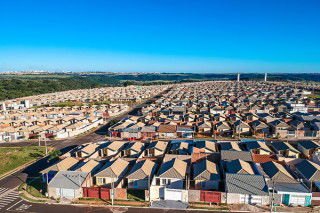News that CRH has beaten off competition to acquire a package of assets from Lafarge and Holcim ahead of their planned merger has been welcomed by the market, but not everyone is convinced by the rationale and apparent shift in strategy.
CRH confirmed on Monday that it had “entered into a binding agreement to acquire certain assets currently owned by either Lafarge and Holcim that the companies must sell for their proposed merger to receive regulatory approval across various jurisdictions. The portfolio of building materials assets to be acquired by CRH for an enterprise value of EUR6.5bn includes operations spanning four regions: North America (Canada and US), western Europe (UK, Germany, France, Réunion), central and eastern Europe (Slovakia, Serbia, Hungary and Romania) and emerging markets (Philippines and Brazil).
"We are acquiring a quality portfolio of assets, which complement our existing positions, at an attractive valuation and at the right point of the cycle," commented Albert Manifold, CRH chief executive.
Into the Top 3
The deal will propel CRH to become the third-largest building materials business in the world by market value, overtaking HeidelbergCement and Cemex to sit behind Lafarge and Holcim at the top of the table. As well as complementing CRH’s businesses in North America and western Europe, the deal will make it the largest building materials producer in central and eastern Europe and double exposure in emerging markets where it is currently present in India and China.
According to the company, the assets to be acquired produced 23Mt of cement, 79Mt of aggregates, 8Mt of asphalt and 10Mm3 of ready-mix concrete in 2013. These assets generated an estimated EBITDA of EUR752m, implying an 8.6x EV/EBITDA transaction multiple. Approximately two-thirds of the revenue is generated inside Europe, with Canada the second-largest revenue generator (EUR1bn), while Brazil and Philippines had a combined revenue of EUR0.6bn.
The acquisitions will significantly boost CRH's cement footprint. The deal includes 24 integrated plants and 10 grinding units, providing an additional capacity of 36Mta. Overall, the move will see CRH double its cement volumes from 19Mt at present to 42Mt post-acquisition, while aggregate tonnages will increase from 170Mt to 249Mt.
Synergy scope
The acquisition will increase CRH's international diversification and improves vertical integration. CRH already has positions in three of the four regions it is set to acquire in, creating synergy potential. It should boost underlying earnings by about 25 per cent in the first full year of ownership if the deal completes by mid-2015, according to the company. Around EUR90m of synergies - net of implementation costs - would also be achieved in the first three years, post-acquisition.
While some believe that the synergy target is realistic and possibly even conservative, analysts at Bernstein Research see limited scope for synergies and caution that in some instances this might actually be negative, given limited potential for market concentration or closure of regional offices. There may even be cases where individual plants are to be sold without their networks of sales, distribution, back office and regional technical support that will remain with the LafargeHolcim entity and CRH will have to build these from scratch, it notes. The Brazil and Philippines assets have no overlap with CRH’s existing portfolio but are good long-term growth markets.
Not all the assets are going to remain long term in the group and some will be required to take on partners, according to management. The group is reportedly in discussions regarding the UK with private equity player KKR and noted the requirement to deal with a local partner in Philippines, for example.
A shift in strategy?
Although CRH has expanded through acquisitions for the past several decades, these have tended to be smaller transactions. The Lafarge and Holcim package will be funded by a mixture of new debt, existing cash from its balance sheet and an equity placing of 74m shares (9.99 per cent of the current issued share capital. The company, which had a net debt of around EUR2.5bn (or 1.5x earnings) at the end of 2014, expects this to rise to 3.2x earnings on the back of the deal, before falling again thanks to its own EUR1.5-2bn multi-year divestment programme announced in August last year.
While market reaction to Monday's news has been positive, Bernstein believes that the company's bolt-on model has been the "essence of CRH's appeal during much of the last two decades" and sees the new deal as a departure from the company's "core strengths." It underlines that CRH's traditional model has not functioned since 2008 with substantially-reduced acquisitions spend, and the nature of buys shifting to larger deals in cement with deferred returns. "Together with the burden of financial leverage and new capital commitments, this makes a return to bolt-on M&A, CRH's key competitive advantage, even less likely," the research house cautions.
Mr Manifold has stressed, however, that is "not a shift in strategy," and that while the company normally does around EUR2bn worth of acquisitions a year, the latest move is just compressing two and a half years of those transactions into a single deal. While the acquisitions represents by far the biggest deal in CRH's history, Mr Manifold states: "Put simply, we saw this as the right deal, at the right time and at the right price. It was too good an opportunity to turn down."

Brazil’s cement market contracts in August
Cement sales in Brazil slipped 2.5 per cent to 6Mt in August 2025 from 6.154Mt in August 2024, a...